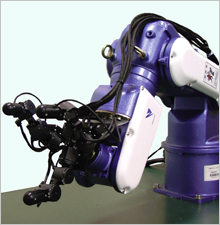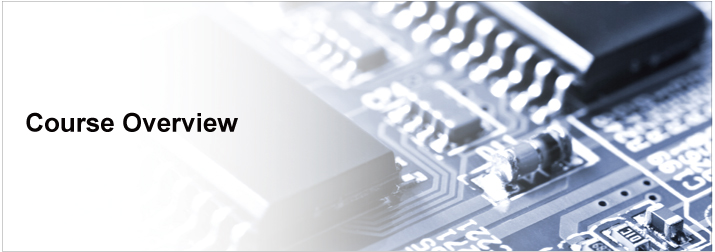Home > Course Overview > Electronic-Mechanical Engineering Course
The Electronic-Mechanical Engineering Course in the Department of Mechanical and Aerospace Engineering was originally established under the Department of Electronic-Mechanical Engineering in 1982 for the following three reasons.
(a) Historical background: Recent developments in micro-electronics technology and computer science influence mechanical engineering and produce new intelligent machines with advanced technology based on computer-aided design (CAD), computeraided manufacturing (CAM), numerically controlled machine tools, industrial robots, etc. As a result, electronic-mechanical engineering was founded to integrate conventional mechanical engineering with electronics and information engineering.
(b) Regional advantage: There are many large manufacturing companies in the aerospace industry, automotive industry, steel industry, mechanical industry, etc., in the Chubu region, i.e., the central region of Japan ’s main island. They all require the development of new and innovative electronic-mechanical engineering technologies.
(c) Human resources: Education for engineers and researchers to acquire knowledge of recently developed technologies in electronic-mechanical engineering is also needed. They are expected to design and produce value-add products using integrated knowledge of electronics and information engineering as well as conventional mechanical engineering.

The Department of Electronic-Mechanical Engineering started with three research groups (the Mechatronics Basic Theory Research Group, the Mechatronics Applied Design Research Group, and the Ultra-Precision Machining Research Group). After that, more research groups joined the department, and they established the Department of Electronic-Mechanical Engineering. By 1992, the department consisted of six research groups. In 1994, owing to a proposed government policy giving overriding priority to the graduate school, the department joined the Department of Mechanical Science and Engineering together with the Department of Mechanical Engineering and the Department of Mechano-Informatics and Systems, and changed its name to the Electronic-Mechanical Engineering Course.
The Electronic-Mechanical Engineering Course provides a curriculum with a variety of topics including mechatronics and aerospace engineering as well as conventional mechanical engineering in collaboration with other courses in the department (the Mechanical System Engineering course and the Aerospace Engineering course). In the first year, students study basic subjects such as mathematics and physics, which are common to all courses in the department. Professional education is available after the first year. The subjects of professional education in the Electronic-Mechanical course include basic mechanical engineering, electronics, basic information engineering, control engineering, robotics, computer-aided design engineering, etc. Students can acquire knowledge to design intelligent and integrated mechanical systems.
The Electronic-Mechanical Engineering Course has set the following educational objectives and goals to realize the education philosophy of the School of Engineering, Nagoya University.
Educational Objectives

Societal needs for more highly functional, intelligent, and diversified industrial products have been growing in parallel with the development of information technology. To meet these needs, it is essential to integrate mechanical and electrical engineering for developing advanced, highly functional machines. To accomplish this, our course integrates education in both mechanical and electrical engineering in a cross-sectoral manner.
Our course curriculum includes subject matter from basic mechanical engineering such as material, heat-fluid, and vibration engineering, as well as from basic electrical engineering such as electronic circuits and information theory. In addition, interdisciplinary subjects such as control and instrumentation engineering will be learned. The goal is to acquire systematically the specialized knowledge of hardware and software used in information processing, production systems, system design, mechatronics, and robotics.
Educational Goals
To accomplish these educational objectives, our course is aimed at developing the following abilities in our students:
- (A)
- To create added value by considering various aspects of phenomena from a global perspective.
- (B)
- To understand the professional and ethical responsibility of an engineer.
- (C)
- To apply basic knowledge and practical ability in science and engineering.
- (D)
- To acquire specialized knowledge on electronic-mechanical engineering and its relevant fields, and the ability to use that knowledge for solving technical problems.
- (D-1)
- To acquire knowledge on Mathematical Analysis, Algebra, Basic Chemistry,Industrial Management, and Industrial Economics, and the ability to use that knowledge for solving various problems of electronic-mechanical engineering.
- (D-2)
- To acquire basic knowledge on the Physics of Mechanics, Electromagnetism, Quantum Mechanics, and Statistical Physics, and the ability to use that knowledge for solving various problems of electronic-mechanical engineering.
- (D-3)
- To acquire specialized knowledge in Material Sciences, Material Mechanics, Fluid Dynamics, Thermal Dynamics, and Vibration Engineering, and the ability to use that knowledge for solving various problems of electronicmechanical engineering.
- (D-4)
- To acquire specialized knowledge in Electric Circuits, Electronic Circuits, Digital Circuits, Computer Software, and Fundamentals of Information, and the ability to use that knowledge for solving various problems of electronic-mechanical engineering.
- (D-5)
- To gain firm knowledge on control theory, dynamical system theory, sensing engineering, and signal processing, and the ability to apply that knowledge to mechatronics.
- (D-6)
- To gain firm knowledge on combined technologies such as actuator engineering and mechatronics engineering, intelligent technologies such as robotics and information processing, and system design technologies such as precision machining, manufacturing systems, and design of mechanical system, and the ability to apply that knowledge to mechatronics.
- (D-7)
- To cultivate originality and creativity using combined technologies, intelligent technology, and system design technology by means of plentiful experimentation and workshop practice in areas such as creative machine design, and design practices based on an advanced knowledge of mechatronics.
- (E)
- To acquire the ability to find appropriate engineering solutions consistent with global and social backgrounds.
- (F)
- To acquire global communication ability using text, speech, and other information tools.
- (G)
- To acquire the ability to study and learn about current technologies using your own initiative.
- (H)
- To acquire the ability to fulfill the role of a professional engineer.
- (I)
- To acquire the ability to contribute to the development of engineering technology according to the needs of your local society, culture, and industry.














